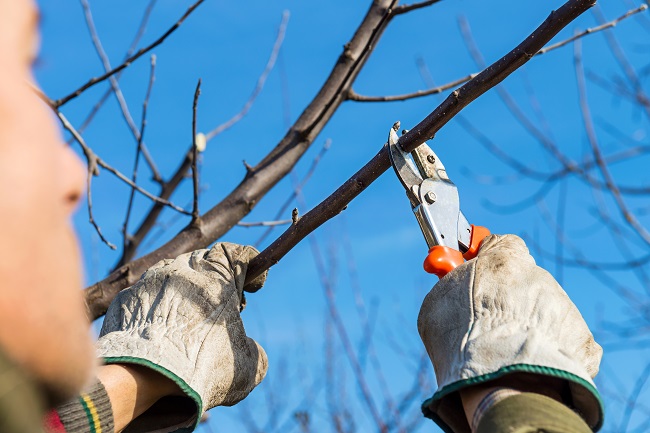The Dos and Don’ts of Tree Pruning
The key to successful curb appeal for your business is to keep the trees on your property looking healthy and beautiful, but how do you know if you’re doing it correctly? Many people are unaware that the wrong way to trim a tree can actually cause more harm than good by spreading disease and damaging the tree’s health. Before you begin your gardening, it’s important to know what you’re doing. There are plenty of dos and don’ts of tree pruning to follow to make your garden beautiful.

Dos
Prune trees regularly
Generally, trees need pruning every 3-5 years at least. Pruning encourages new growth and keeps the branches from growing out of proportion to the rest of the tree. However, some fruit trees need pruning once a year to encourage flowering and fruiting. Different varieties have different pruning needs.
Prune dead branches
Regularly inspect trees for dead or damaged branches. Dead branches should be removed from trees before they rot and cause disease. Dead branches that are left littering the tree will become nests for insects and disease. Dead branches should also be removed before they fall and cause damage to your property.
Plant shrubs in neat rows
It’s a good idea to plant shrubs in a straight row. But, don’t plant shrubs too close together. You want plenty of air circulation.
Water your plants
Water your plants regularly. However, they don’t need small amounts of water every single day. Water them once a week. After all, you don’t want the roots to dry out.
Don’ts
Prune healthy branches
Healthy branches on the tree should be left alone. Healthy branches will grow out naturally on a tree, but pruning them will prevent them from growing out as well.
Don’t remove more than one-third of the leaf surface
Removing too much of the tree’s foliage can cause the tree to die. If a tree is pruned or thinned too much, it will not be able to photosynthesize.
Try to prune your tree by yourself
Last, but not least, never try to prune a tree on your own. Trees have sensitive areas that need to be pruned by a professional, otherwise you may damage the tree. Thinning out branches, also known as “back pruning,” should only be done by a certified commercial landscape company.
Conclusion
So, now that you know the dos and don’ts of tree pruning, you’re ready to improve the attractiveness and curb appeal of your business. If you need your trees pruned, contact our experts at Metro Lawn Care in Dallas, TX for a free estimate. We have over 34 years of experience in servicing the Dallas/Fort Worth area, and we can help you with any questions about tree trimming, tree care, tree removal, and more.
